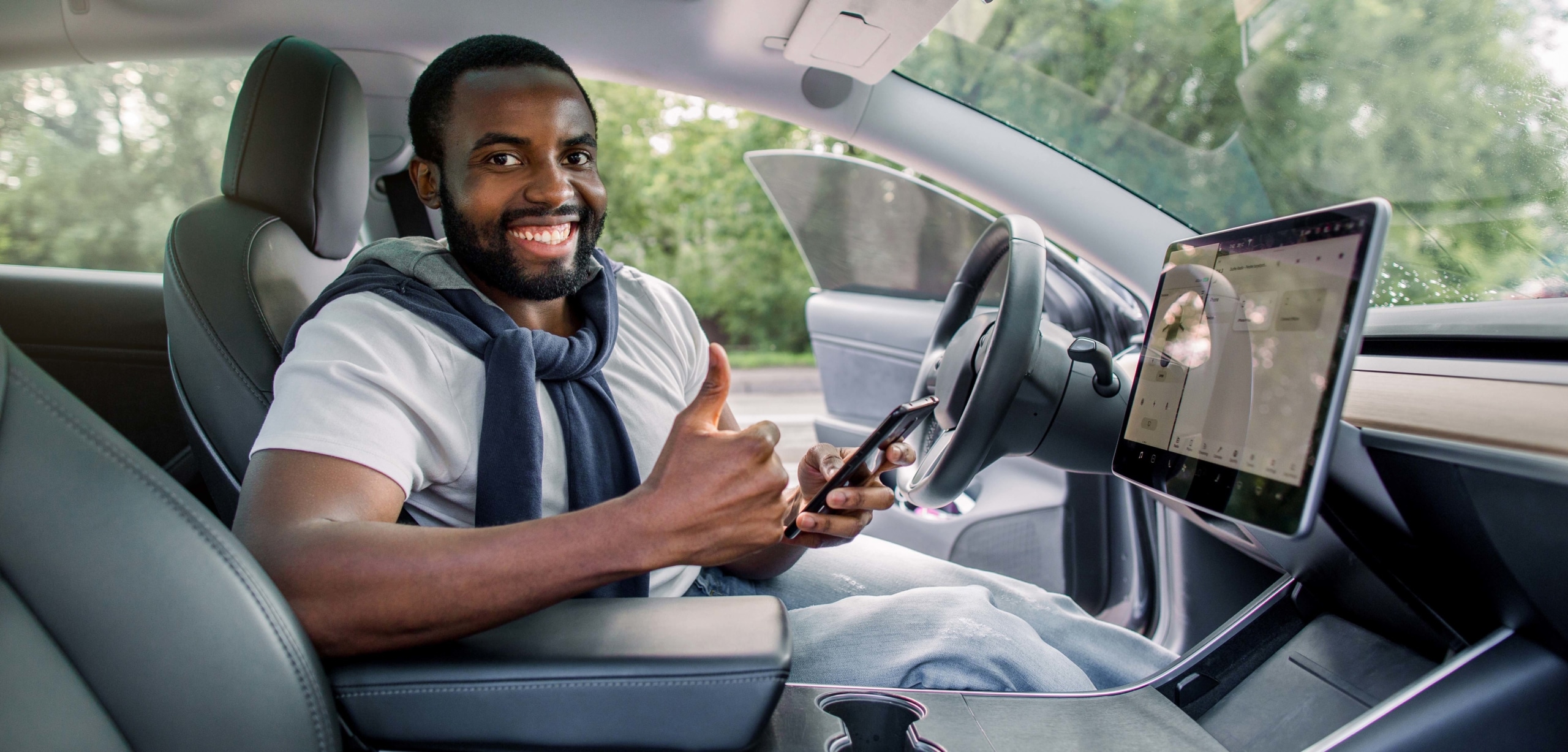Upgrades can make your car safer and cost-effective, but which ones are worth their price?
Do you ever get annoyed by how much it costs to fill up your car, or groan at the sticker shock when it comes time to replace your tires? Or maybe you just wish you had a smoother, more enjoyable ride. Either way, there are a lot of reasons why people choose to upgrade their vehicle rather than buy a new one.
Not all car upgrades were created equal, though. Some really are worth more than others.
Best Car Upgrades
If you’ve got some extra cash to spare and you want to upgrade your ride, here are the best car upgrades that are worth the money:
Premium Spark Plugs
If your car runs, it already has spark plugs. But over time, these spark plugs get worn down and need to be replaced, usually around the time that you notice your engine is starting to run a little rough and your fuel economy is decreasing.
When that happens, consider replacing them with high-performance spark plugs made with noble metals like platinum and iridium. These are more resistant to breaking down over time, meaning that your engine will stay running smoother and more efficiently for longer. Plus, it’s one of the easier car upgrades to DIY if you’re handy with a wrench. You can purchase a set for around $100.
Backup Cameras
Backup cameras have been mandated on new cars since 2018, and for good reason. They make driving — specifically, reversing — a lot safer. And given that a quarter of all accidents happen when a driver is backing up (despite taking up just 1% of driving time), this is one of the most important safety-focused car upgrades you can spend your money on for older cars. Plus, it’s just a lot easier to reverse when you can see properly.
There are a wide range of aftermarket backup cameras available today. Some of the simpler models rely on a license plate-mounted camera, and can cost about $50 or less. Higher tech versions that offer extra features like wireless connection and multiple camera angles, run closer to $100 or more.
Premium Tires
Anyone who’s ever driven on slippery roads knows that good tires are one of the best car upgrades money can buy. This is especially true for people who live in northern climates, where a good set of high-quality winter tires are more of a necessity than an option.
A set of no-frill tires can set you back $50 to $150 per tire, while you can expect to pay $300 or more per premium tire. Tires are one of the more expensive car upgrades that you’ll need to purchase over the life of your vehicle, so it’s a good idea to save up for them.
If all-season tires won’t do and you need to change out your performance tires every season, consider buying an extra set of rims and having a tire professional mount your snow tires on them. That way, you can change out your tires yourself when seasons change.
Remote Start
Speaking of extreme climates, one handy car upgrade is a remote start that allows you to start up your vehicle well before you hop in. Remote starts are one of the more affordable car upgrades, costing around $250 to $400 total, including installation.
Remote start makes your ride more bearable if it’s extremely cold or hot by giving your car’s climate control system a chance to get cranking. They can help your engine run more smoothly by fully warming up before you start driving (in the case of a cold climate), and allow your window defrosters to start working too.
Tire Pressure Monitoring System
Checking your tire pressure is part of regular routine maintenance, but be honest — how often do you actually do it aside from an obvious flat? It’s estimated that around a quarter of all light cars on the road today have at least one under-inflated tire.
Having properly inflated tires not only saves you money due to increased fuel efficiency and decreased tire wear, but it also affects braking distance and handling. If your tires are underinflated by even a few psi, your car’s performance can suffer or even become dangerous to drive.
The good news is that you can easily install an aftermarket tire pressure monitoring system on your car. This is perhaps the cheapest and easiest car upgrade of all, costing around $100 and only requiring you to replace the caps on your tire valve stems to ones with special sensors.
Stainless Steel Brake Lines
Most cars come with rubber brake lines to transmit the power from your foot to the brake pads. But rubber is flexible, and that means that some of your foot-pressing-power is lost to bulge in the lines. Plus, rubber lines can be nicked and damaged by flying rocks and road debris.
Installing new brake lines made out of braided stainless steel is one way to improve your car’s braking system, and thus, its safety. These lines better transmit force to your brake pads and are better at resisting damage. You can expect to pay around $200 for this car upgrade.
Apple CarPlay or Android Auto Systems
Distracted driving from cell phone use caused 61,000 car crashes in 2019, according to the National Safety Council. Yet, you still might need to use your cell phone some of the time to play music or get directions.
Dashboard-mounted screens that interface with your phone are one common solution in new cars. But if you’re driving a used car, you can still get in on the action with an aftermarket option, such as Apple CarPlay or Android Auto. You can expect to pay between $300 to $500 to get one of these systems installed in your car.
Bushings
Bushings are like your car’s version of joint cartilage, but for suspension components. You can find them sprinkled throughout your car’s suspension system (such as where your sway bar is connected), and they allow a limited range of motion without the jarring metal-on-metal contact. This makes for a smoother, quieter, and safer ride.
But they do eventually wear out. When they do, consider replacing them with better suspension bushings, such as ones made out of polyurethane. You can expect to pay between $250 and $350 for the job, but in return, you’ll notice a big improvement at the steering wheel with more responsive handling.
Limited Slip Differential
When your car hits a slippery patch or gets stuck, you’re probably familiar with the tires-spinning-but-going-nowhere feeling. One of the best aftermarket upgrades that can really help is a limited slip differential, which allows your car to send power to the tires that have traction, and not where they don’t.
Thus, a limited slip differential can help make your car safer by limiting the slipping and sliding. It also helps your tires last longer, since they won’t be spinning without traction as much. It is on the pricier side, however, costing $600 to $1,200 to have it installed by a mechanic.


Car Upgrades To Skip
Many car upgrades, done for purely cosmetic reasons, simply aren’t worth it. At best, it’s a harmless way to spend your cash. At worst, it lowers your car’s resale value, and in some cases can even make it a danger to drive.
Spoilers
You may have spotted aftermarket spoilers added to cars — those little fins attached to the trunk. Those have a real purpose at the racetrack, where they harness airflow to push cars down harder against the pavement where the tires can get a better grip. To dial that formula in just right, engineers must use a wind tunnel while installing racing spoilers.
But your average grocery-getter isn’t entering the Indy-500 anytime soon, making these everyday accessories more of a fashion statement than a legitimate car upgrade. Even worse, an improperly-installed spoiler can interrupt your car’s handling at high speeds, making it potentially dangerous.
Underglow Lighting Systems
Neon underglow lights are a popular way to make your car pop in the nighttime. They can be useful in some cases, such as if you’re towing an RV and you roll into your camp once it’s dark, or if you drop things on the ground. But since most of us aren’t doing midnight car maintenance, that’s a pretty far stretch.
Furthermore, underglow lights aren’t even legal in some states, such as Michigan.
Fake Air Intakes and Scoops
Real air intakes and scoops are devices that shoot air straight through an air filter and into the engine to increase horsepower in racing cars.
Many people accessorize their car with faux air intakes and scoops, which are easy mods that can be glued or bolted to the hood. But without any functioning ability, they’re exactly what they sound like: permanent and expensive hood ornaments that can harm your car’s resale value.
Lift Kits
If you go off-roading a lot in a low-clearance vehicle, there can be a benefit to raising your car’s height if you’re bumping rocks too often. (Or, better yet, just buy a higher-clearance vehicle.) But we’ve all seen cars (often trucks) that are lifted high — sometimes too high — off the ground.
Such lift kits can be dangerous. By raising the center of gravity of your car beyond what it’s designed to handle safely, it’s harder to brake, it increases blind spots, and it makes a rollover more likely when you’re turning corners.
About The Author
RateGenius
A better way to refinance your auto loan. RateGenius works with 150+ lenders nationwide to help you save money on your car payments. Since 1999, we've helped customers find the most competitive interest rate to refinance their loans on cars, trucks, and SUVs. www.rategenius.com
;)



